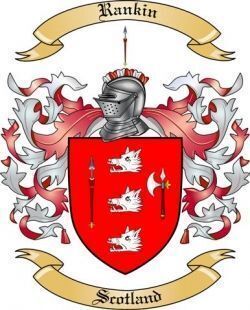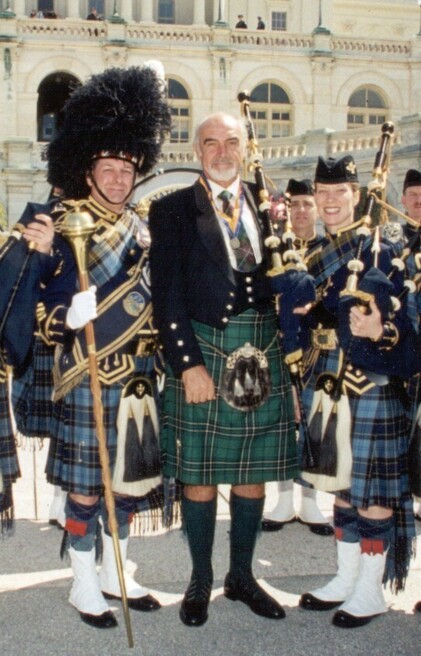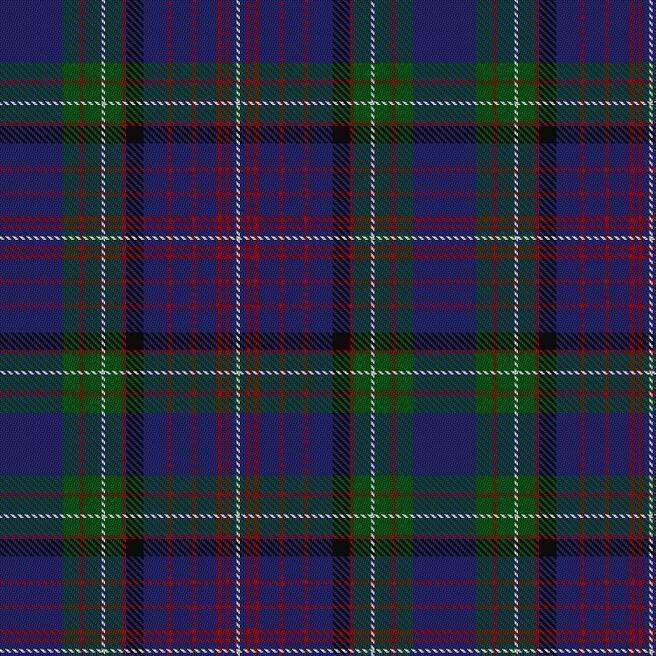1,500 YEAR RANKIN CLAN TIMELINE
Presented by Bob Jarnagin at the 65th ANNUAL RANKIN REUNION. July 8, 2012
PART 1 – THE EARLY YEARS. The move from Ireland to Scotland (500 AD)
- Surname Rankin believed to be of Dalriadan origin, a tribe that invaded Scotland, along with other Scoti tribes, from Northern Ireland. Only 7 miles of sea separate Ireland and Scotland.
- Primogenetry – Eldest son inherited family’s land. Younger sons often headed out on their own to settle elsewhere.
- The Dalriadans fought with the Picts, the oldest inhabitants of the land, who were of Celtic origin and occupied the eastern area of Scotland. Picts were the first “painted people” – practice of tattoo.
- Fergus Mor MacErc, first king of Dal Riada, defeated the Picts in 498 AD. It took about 500 more years for the Picts, Scots, Lothian Angles, and Britons to unite under common allegiance.
- Rankin emerged as a Scottish Clan in the territory of Ayrshire. The Rankins were a sept of the Clan MacLean. Duart Castle, situated on the Isle of Mull, was the seat of the MacLeans.
- Presbyterianism emerged in Scotland with its doctrine based upon the teachings of John Calvin (1509-72). Its central theme is predestination – everything that happens is pre-ordained by God. From the mid 16th century, Presbyterianism developed as a distinct branch of the Reformed church in Scotland, where the Kirk was reformed through Calvinism as interpreted in the works of John Knox (C.1513-72).
PART TWO – Move from Scotland back to Northern Ireland (1688)
- Part of the Ulster Plantation during the reign of King James I. Large tracts of land were given to London land companies who obligated themselves to have the land settled by Protestants. Moving Lowland Scots to Ulster would increase its Protestant population to promote English dominance of Catholic Ireland.
- Another factor in the migration of Scots to Ireland was that Episcopacy, with its hierarchy of bishops, was forced upon the people of Scotland, and this caused many Presbyterians to immigrate to Ireland. In 1688, during the last two years of the reign of King James II of England, there were religious and rebellious persecutions in Scotland. Alexander may have been part of the Covenanter movement when dissenting Presbyterians were subject to intense persecution, a period also known as the “Killing Times”.
- Alexander Rankin and son, William, flee Scotland to escape religious persecution and settle in Derry County, Ireland. Soon they were participating in the siege of Londonderry.
- During the Revolution of 1688, James II, a Catholic, was exiled to France and later traveled to Ireland. William of Orange, a Protestant, ascended the British throne in December 1688. William’s usurpation of James was still unacceptable in Catholic Ireland, but the Protestant areas of Northern Ireland refused to support James. The area fell into chaos and rebels rampaged through the countryside. The Protestants fled to fortified towns like Londonderry.
- Alexander and William Rankin reportedly participated in the defense of Londonderry which started on December 7, 1688 and ended on August 1, 1689.
PART THREE – The move from Northern Ireland to America (1721-1727)
- The Jacobite Risings followed with two revolutions in 1715 and again in 1745. They wanted to return James VII of Scotland and James II of England to the throne.
- After the revolutions, many of the Ulster Scots were only tenant farmers with little hope of advancement. They were oppressed politically, economically and religiously by the English government. High rents, bad prices for products, low wages, and religious persecution were the norm.
- Religious freedom and a better way of life were the dream that drew many Ulster-Scots to make the long and arduous journey by sea to America. Often only 60-70% would survive the trip across the Atlantic.
- For the Rankins this encompassed three of William’s sons making the trip circa 1721 – 1727. Adam, Hugh, and then John sailed to the port in Philadelphia. Thomas Rankin I arrived with his father, John.
- Philadelphia became the Ulster-Scots most popular port of entry. The Pennsylvania colony had created an eye toward accommodating religious freedom and thus welcomed the Ulster dissenters.
PART FOUR – Migrating south from Pennsylvania to North Carolina/Tennessee
- Life for the Rankins in Pennsylvania was pretty good, but the restless nature of their Scots-Irish blood soon set them moving on down the Great Valley into Virginia and thence into the Carolinas. The Scots-Irish settlers were indeed restless. Their natural makeup demanded turmoil. They showed no hesitation in pushing into Indian territory and settling on lands claimed by tribal chiefs.
- During the American Revolution it is believed that Thomas and much of his family moved to Augusta County, Virginia where land was available at very affordable prices.
- Soon after the end of the American Revolution (1765 - 1783), they pulled up stakes again and headed down the Wilderness Road which followed the old Great Indian War Trail. There, they claimed land during the year 1784 in Greene County, North Carolina – which later became part of East Tennessee.
- Here they found a mountainous land much like the land of their roots in Scotland and a freedom on America’s new frontier to live and to worship as they pleased.
- All along the way the Scots-Irish founded new Presbyterian churches. The path of Scots-Irish migration from Pennsylvania and Maryland through the Shenandoah Valley into the Carolinas and upper East Tennessee can be traced on a map of the Presbyterian churches in the Eastern United States.
- Here in Jefferson County, the Rankins help found our oldest church, Hopewell Presbyterian Church in Dandridge, and later the Mount Horeb Presbyterian Church - where we sit today.






